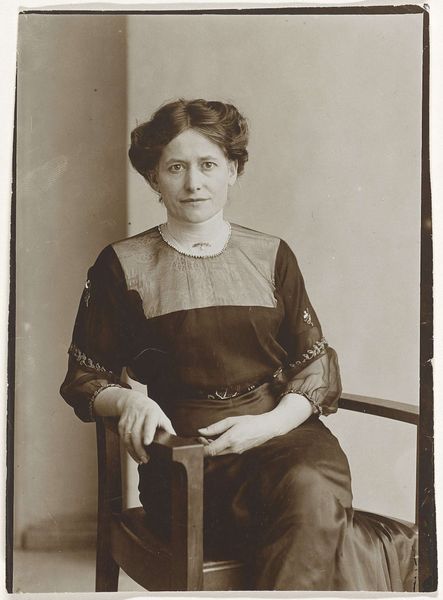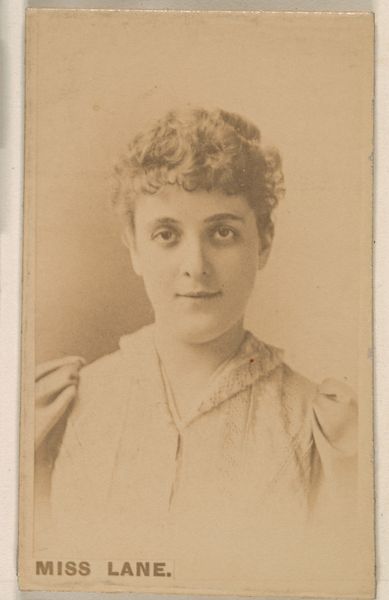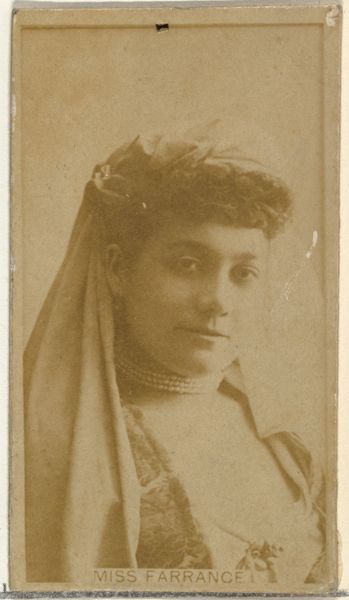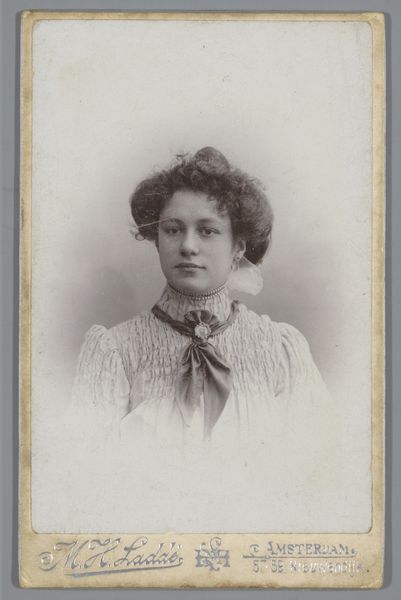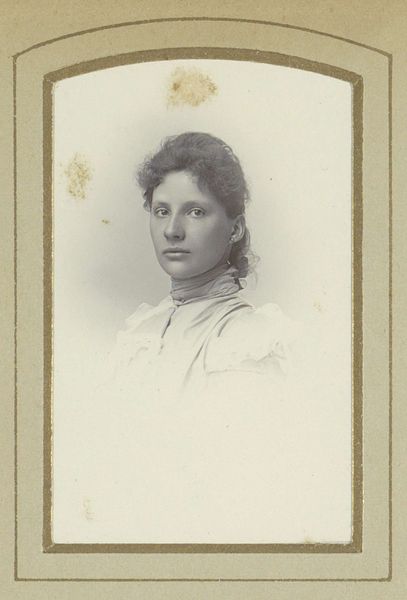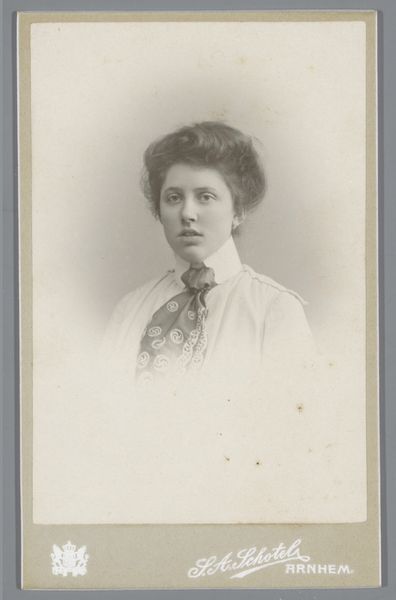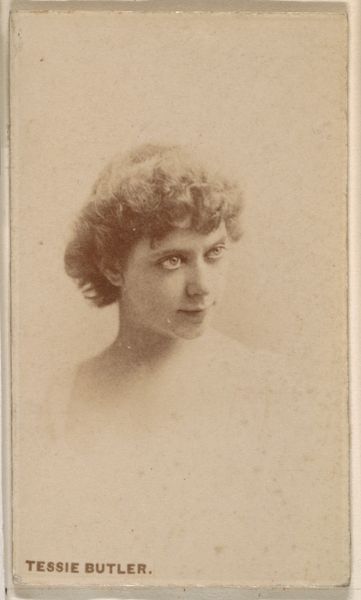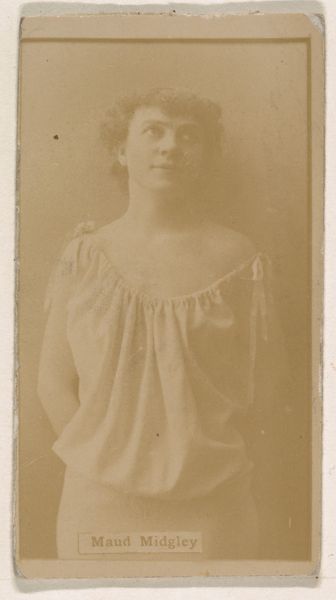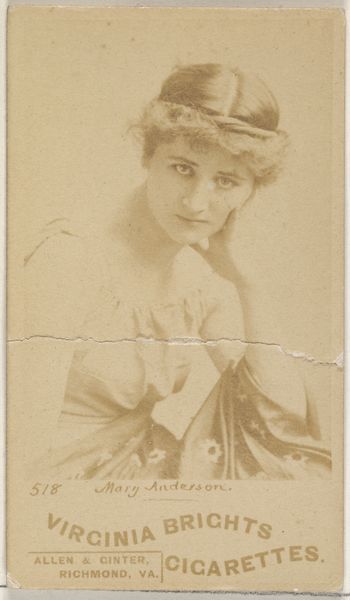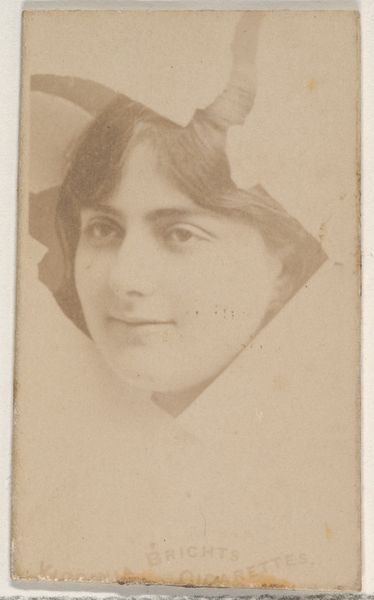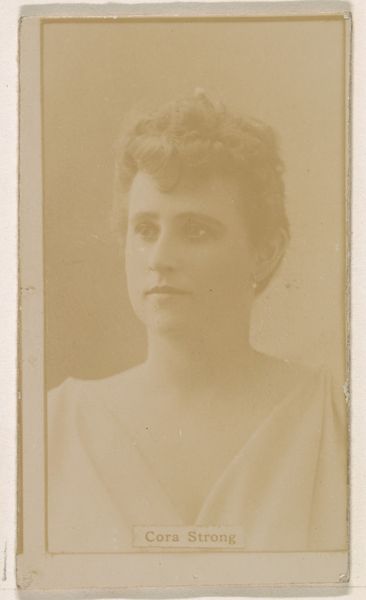
photography
#
portrait
#
self-portrait
#
pictorialism
#
photography
#
realism
Dimensions: height 38 mm, width 29 mm
Copyright: Rijks Museum: Open Domain
Curator: Welcome. Today, we're looking at an interesting photograph simply titled "Portret van een vrouw," or "Portrait of a Woman." It's estimated to have been taken around 1914 by an unknown photographer. The piece employs elements of both realism and pictorialism, common styles for portraiture from that period. Editor: Oh, my first impression is this image feels gentle, like a faded memory. The light is soft, almost blurring the edges, and that sepia tone gives it a wistful quality. It makes me wonder about her story, the silent tales photographs hold. Curator: Indeed. The historical context here is key. Consider the woman's attire. Her sailor collar and the somewhat restrained pose could reflect the societal expectations placed on women during the early 20th century. The hint of pictorialism softens her image, perhaps idealizing her within those constraints. Editor: It also sparks a thought about the anonymous artist! You can sense an emotional tenderness, maybe even longing, between artist and model; a quiet conversation transcending social norms of that time. It definitely evokes a bygone era with so much societal expectations. Curator: The use of photography itself is a statement. It was becoming increasingly accessible, offering a more democratic mode of portraiture compared to painting. So the choice to create this work opens up questions of class, gender, and artistic representation at the turn of the century. What is shown and perhaps more importantly, what is purposefully concealed or hinted at? Editor: You got it right on point with social commentary. Now, let's add this question to that idea, Do you get this weird sensation of this artist and her as the model knowing exactly that they’re making something precious and profound that is much, much bigger than they both can possibly know, at the very second it's being shot? That would be quite a surreal encounter. Curator: A fascinating suggestion. It prompts consideration about the sitter's agency and whether it acts as an empowered act, perhaps resisting established expectations or, conversely, reinforcing them. Editor: Well, to conclude, to me, her picture isn't just an old photograph; it whispers an enigma about longing, connection, a touch of innocence, and perhaps the biggest unspoken things that pictures tell the most, the fleeting moments, really—a feeling trapped in sepia. Curator: Absolutely. And that is perhaps the power of images. The convergence of social context, intentionality, and emotional impact encourages us to ask hard questions about what they choose to portray about a certain group in the era.
Comments
No comments
Be the first to comment and join the conversation on the ultimate creative platform.
